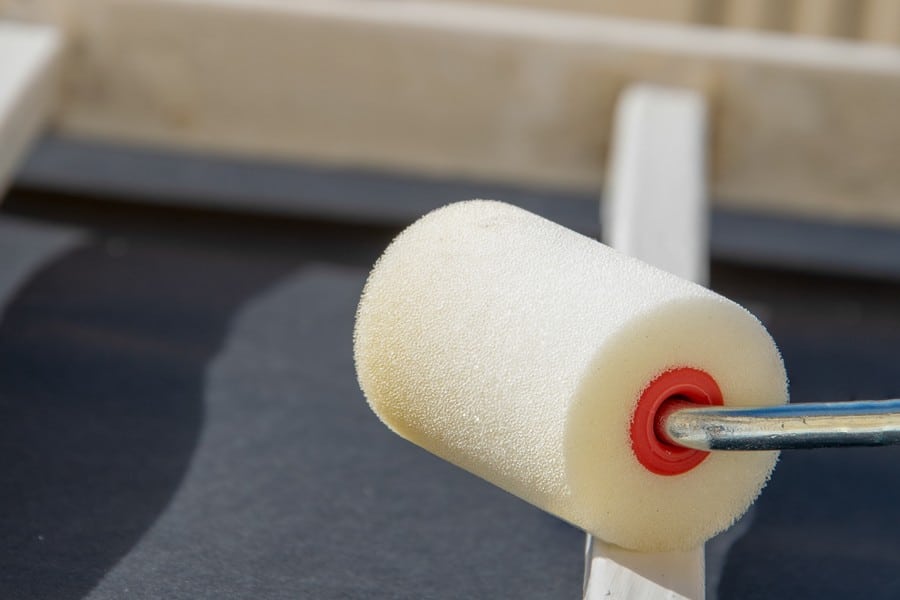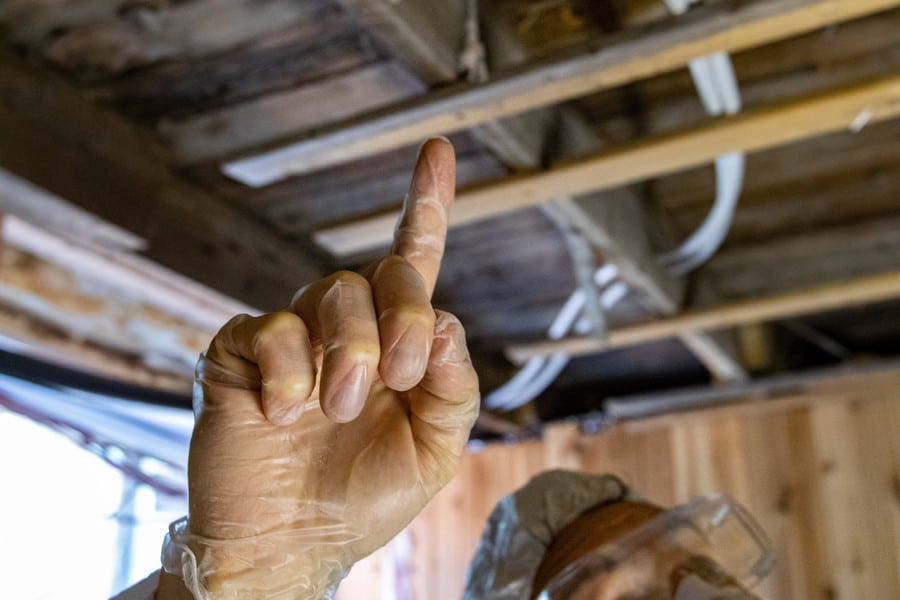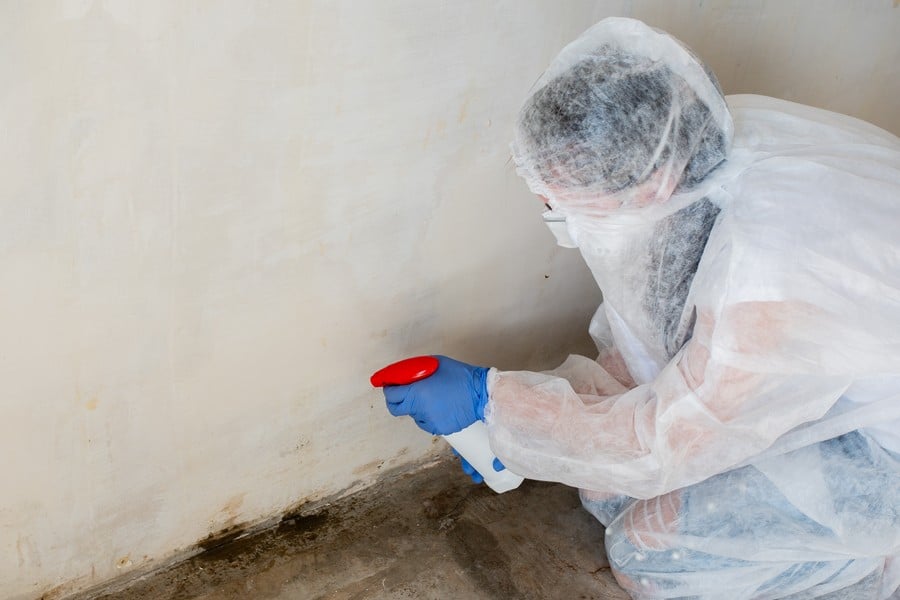Contact Sussex Damp Experts Now to Speak With an Expert.

The presence of unwanted moisture in a building’s structure, which can be caused by water intrusion from the outside or condensation from within, is known as structural dampness.
In basement waterproofing, the importance of a suitable cavity drain membrane cannot be underestimated because it’s the most effective barrier against moisture intrusions from the surrounding soil. For example, rising moisture can harm the lower structure of a wall, jeopardising its stability and deteriorating its beauty. Sussex Damp Experts can help with this issue and provide a complete, dependable solution. Both are influenced by the surrounding environment. A vast percentage of damp problems in buildings are caused by condensation and water penetration.
This evaporation-limited capillary penetration occurs—independent of the mechanisms that create structural damp, increasing humidity levels increase structural damp. The shape and porosity of the construction materials through which this evaporation-restricted capillary penetration occurs are governed by the construction materials’ shape and porosity.
Structural dampness is problematic because it jeopardises the construction and stability of the building, especially when there is wood on the structure or if the building has a basement or cellar. Basement waterproofing can be very effective when applying cavity drain membrane systems, for example. If you’re concerned about wetness, call our damp proofing experts at 01273 257 765 or send us an email for expert advice on dealing with the problem. We can do a comprehensive damp and timber survey for you and provide the most cost-effective solutions.

Dampness tends to cause secondary damage to a structure. Unwanted moisture promotes the growth of various fungi in wood, resulting in rot, mould, and sick building syndrome. Rising damp is caused by wallpaper loosening due to the deterioration of plaster and paint caused by a defective damp proof course, for example. Stains from water, salts, and mildew wreak havoc on surfaces. Buildings with a significant mould infestation, usually due to extensive water infiltration or flood damage, have greater airborne mould levels. Moulds may grow on almost any surface and flourish in high-moisture settings, such as leaking roofs or high humidity levels. That’s why good basement waterproofing is essential.
When a building has damp issues, the timber structure has most likely already begun to deteriorate. That’s why timber damp proofing treatments are crucial as a preventative precaution for potential structural problems, whether they’re used immediately after restoration or to treat old structures. Preventing and avoiding structural repairs is always preferable. But the concerns don’t apply only to the timber structure. Some types of fungus can also thrive in brickwork. Dry rot, unlike other wood-destroying fungi, may grow on and through brickwork, and in ideal conditions, it can even grow over and through dry materials.
If you have any damp concerns with a property, please message us or call 01273 257 765 for guidance and assistance in dealing with the matter as soon as possible.
Waterproofing is the process of making an object or structure waterproof or water-resistant such that it remains relatively unaffected by water or resists water infiltration under certain conditions.
In terms of buildings, utilising the direction of BS8102:2009, waterproofing of the structure is designed to produce a dry environment, whether it is an existing structure that is being refurbished or a new-build structure.
Structural waterproofing will help prevent humidity from damaging the building’s structure, preventing structure degradation and ensuring the structure’s stability.
The importance of this treatment is even more significant when dealing with basement waterproofing (or cellar waterproofing) because these areas are one of the most prone to humidity and dampness. Suitable cavity drain membranes may be the best solution for underground structures.

When used as part of a comprehensive damp proofing strategy that includes other damp proofing technologies for walls, ceilings, and floors, structural damp proofing can extend the life of a structure and improve the quality and security of life for everyone who uses it.
With the correct approach, the waterproofing techniques can maintain or restore the structural integrity of buildings and surrounding structures.
Our Contracts Manager and one of our CSSW Qualified Surveyors will supervise the waterproofing system installation by our teams of operatives throughout the project. Our staff at Sussex Damp Experts are highly skilled and undergo continual training to use the best products and procedures in a waterproofing specification.
Sussex Damp Experts have experience with a variety of waterproofing solutions, such as basement waterproofing. A damp cellar can also be a concern, and we can help you deal with this issue. We work with the major suppliers to provide your property with the best damp proof, fully guaranteed solutions.
Sussex Damp Experts can apply three different types of structural waterproofing protection:
The structure will most likely be made of concrete or masonry, and its design will provide only limited protection against water infiltration. As a result, protection is primarily dependent on a barrier system applied to the structure (internally or externally) and, where appropriate, usable ground drainage.
Type A systems can be used on wet substrates and provide resistance to hydrostatic backpressure.
These systems are a multi-coat waterproofing method applied to walls, floors, and soffits with numerous interim layers. The device, once deployed, will create a physical barrier that will keep the area dry.
Construction joints, expansion joints, and/or connection joints are used to provide sealing. To enable high joint movement, a Hypalon Strip glued with an epoxy resin is used.
Depending on the grade of basement use, the structure is designed, and built-in reinforced or pre-stressed concrete to Eurocode 2, BS EN 8500 (to minimise water penetration); BS 8102 or BS 8007 (to prevent water penetration).
It is made of structural concrete (including diaphragm walls) or masonry to prevent water from entering the structure. Any water that does get into the basement is channelled, collected, and discharged within the hollow created by adding an inner skin to the walls and floor. This system will typically include drainage systems and sump/pump units to remove groundwater from the structure.
Sussex Damp Experts has a wide choice of goods, brands, and products to choose from. Each damp proofing situation has its unique set of requirements and limits, resulting in a wide range of timber damage and damp proofing treatment and repair choices.
Sussex Damp Experts will develop a tanking strategy and a quotation for these works if structural waterproofing is required, such as underground rooms or where lateral groundwater penetration occurs. Because no two cases are the same, don’t hesitate to get in touch with our team at 01273 257 765 for a personalised analysis and quote on the most cost-effective options.
Sussex Damp Experts will assist you with anything from surveys to treatments, damp proofing, and repairs on wood, walls, ceilings, and floors. Commercial property owners, property management businesses, and residential property owners are among our clientele.
Our damp proofing treatment specialists will analyse and determine the severity of the damp problem in your house. Specific damp and timber treatments and rotten timber repairs are among our specialities, and we use the most effective methods to solve the problem.
Our CSSW surveyors (Certified Surveyor in Structural Waterproofing) will assist you in designing a waterproofing system that adheres to BS8102:2009 criteria (the code of practice for the protection of below ground structures against water from the ground).



Our professionals have received training that meets or exceeds the industry’s standards. Our surveyors are all Certified Surveyors in Remedial Treatment (CSRT), guaranteeing that our customers receive the best possible service.
Some other benefits of choosing our services:
Call us at 01273 257 765 or send us an email for expert damp proofing services.


Max and his team have been at our property all week and I really can’t thank them enough for the fantastic job they’ve done on plastering both our walls and ceilings. They have literally transformed the appearance of our house! Not only has Ma…

From start to finish Max has been incredable. His knowledge lin damp proofing is second to none and his team where very clean and polite. The plastered finish was like glass so happy we choose Max Plastering for job.

Lovely bunch of lads left a very neat and clean job. Problem was solved.

Perfect Finnish and all left clean and tidy and no mess. Used Max previously and would not hesitate to ask him carry out more work.

Max, Harvey and Stuart arrived promptly as arranged. Done a great job on our outside rear wall. Work completed to a high standard, removal of all old material and cleaned up after themselves. I am so pleased with the standard of their work they ar…

They turned up on time and carried out the works in a very professional manor leaving the front of the house clean and tidy. Very impressed would definitely recommend.

I have to say that on every level Max (with Stuart and Harvey) did an extremely professional job! They explained what they were going to do, they were polite and courteous and respected that they were coming into our home. The plastering is of the…

I called max and he managed to come around the same day to do a survey. The next day I received an extremely detailed survey compared to any other damp proofer which made me feel very at ease that he was going to do the right job. Max and team tur…

Contact Sussex Damp Experts Now to Speak With an Expert.